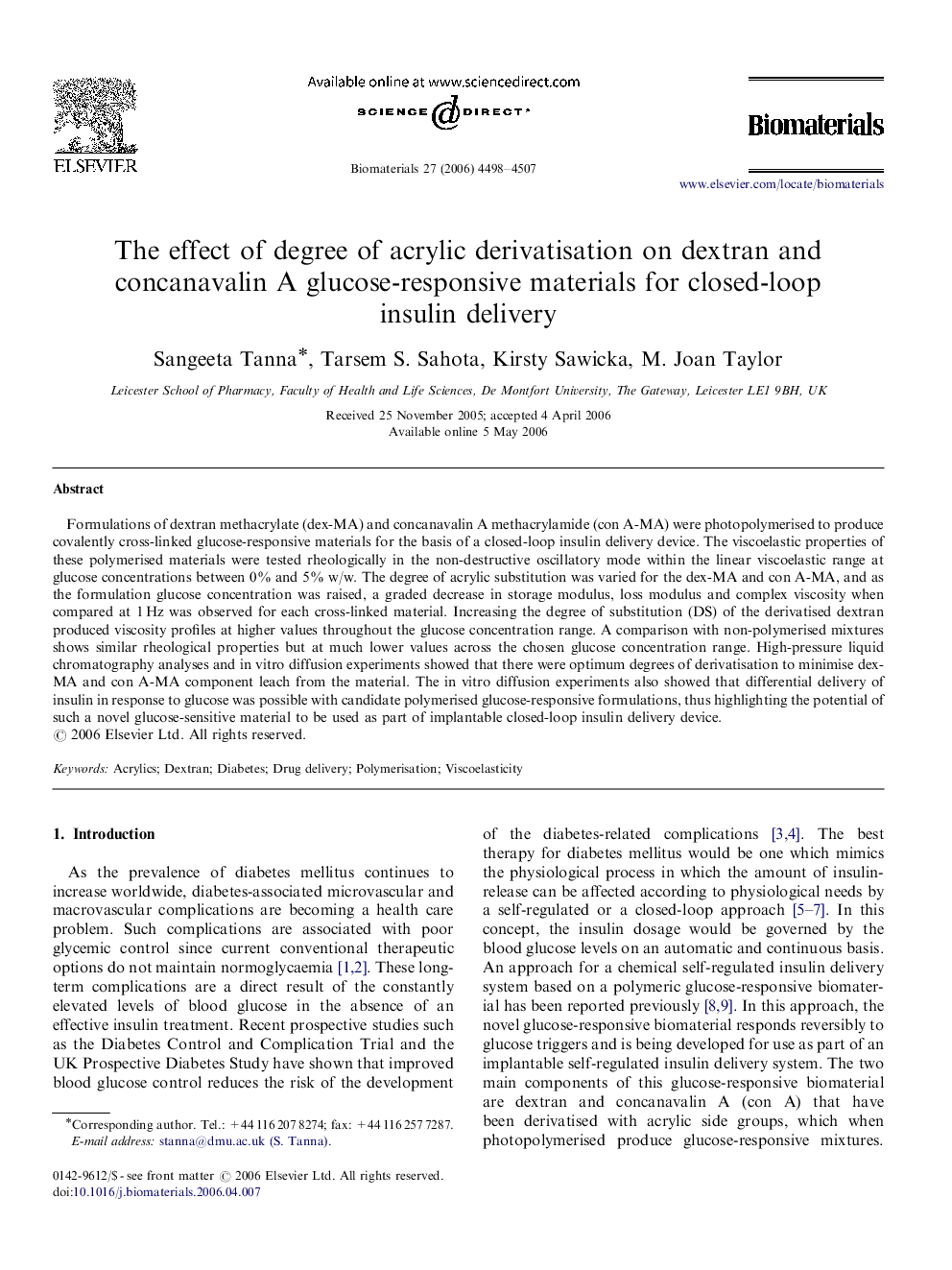| Article ID | Journal | Published Year | Pages | File Type |
|---|---|---|---|---|
| 11439 | Biomaterials | 2006 | 10 Pages |
Formulations of dextran methacrylate (dex-MA) and concanavalin A methacrylamide (con A-MA) were photopolymerised to produce covalently cross-linked glucose-responsive materials for the basis of a closed-loop insulin delivery device. The viscoelastic properties of these polymerised materials were tested rheologically in the non-destructive oscillatory mode within the linear viscoelastic range at glucose concentrations between 0% and 5% w/w. The degree of acrylic substitution was varied for the dex-MA and con A-MA, and as the formulation glucose concentration was raised, a graded decrease in storage modulus, loss modulus and complex viscosity when compared at 1 Hz was observed for each cross-linked material. Increasing the degree of substitution (DS) of the derivatised dextran produced viscosity profiles at higher values throughout the glucose concentration range. A comparison with non-polymerised mixtures shows similar rheological properties but at much lower values across the chosen glucose concentration range. High-pressure liquid chromatography analyses and in vitro diffusion experiments showed that there were optimum degrees of derivatisation to minimise dex-MA and con A-MA component leach from the material. The in vitro diffusion experiments also showed that differential delivery of insulin in response to glucose was possible with candidate polymerised glucose-responsive formulations, thus highlighting the potential of such a novel glucose-sensitive material to be used as part of implantable closed-loop insulin delivery device.
